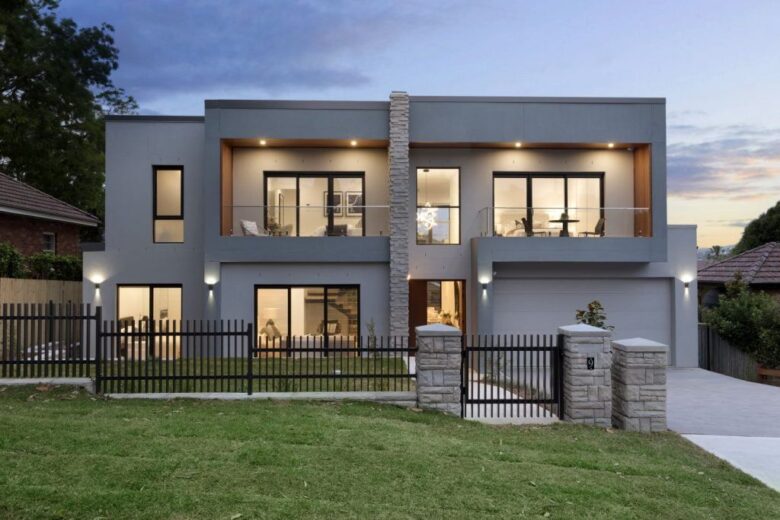Australia is undergoing a transformative shift in housing preferences, with a burgeoning demand for granny flats driven by a blend of regulatory amendments, escalating housing and living costs, and a growing inclination towards versatile living arrangements. James Forrest, CEO of Forrest Small Homes, underscores the multifaceted demand, stating, “We are seeing demand for high-quality granny flats coming from both investors and landowners looking to home multiple generations. Investors are building high-quality studios on their property for short-term rentals on platforms like Airbnb, while others are constructing 2 and 3 bedroom granny flats to accommodate either young adults or older parents.”

Source: news24.com
Contents
Short-Term Rentals Propel Demand:
The allure of platforms like Airbnb has undeniably played a pivotal role in the escalating demand for granny flats. As travel and tourism patterns evolve, with many tourists and travelers seeking more homely and personalized accommodations, granny flats offer the perfect blend of comfort and privacy. Investors, recognizing this shift in traveler preferences, are increasingly viewing granny flats not just as extended family accommodations but as lucrative short-term rental opportunities. These self-contained units, often equipped with modern amenities, provide travelers with a unique living experience, different from traditional hotel stays.
Furthermore, regulatory changes in regions like Queensland have acted as a catalyst, amplifying this trend. By easing restrictions on renting out secondary homes, these reforms have opened the doors for a wider range of property owners to consider the potential returns from short-term rentals. As a result, many are now investing in constructing high-quality granny flats, specifically designed to cater to the short-term rental market. This confluence of traveler demand and favorable regulations is setting the stage for a robust growth trajectory in the granny flat segment of the Australian housing market.
Regulatory Reforms and Economic Pressures:
The regulatory framework in Australia is undergoing significant changes, aligning with the shifting housing dynamics and preferences of its citizens. As multi-generational living gains traction, government bodies are recognizing the need to adapt and provide a conducive environment for such living arrangements. Recent reforms, especially in regions like Queensland, have been pivotal in this transformation. By permitting homeowners to rent out secondary homes, these regulatory adjustments are not only providing homeowners with avenues for additional income but also addressing the housing crunch in many urban areas.
On the economic front, the pressures are palpable. With the escalating costs in housing, coupled with rising childcare and healthcare expenses, many families are feeling the pinch. The traditional nuclear family living setup is being re-evaluated, with many seeing the economic benefits of pooling resources in shared living arrangements. The move towards shared homes, facilitated by the regulatory reforms, is emerging as a pragmatic solution for many Australians, helping them navigate the economic challenges while fostering closer family ties.

Source: aihr.com
Developer Adaptations and Market Gaps:
In the face of changing housing preferences, developers and builders are making concerted efforts to adapt. New designs are emerging that prioritize spaces conducive to multi-generational living, such as ground-floor master bedrooms for elderly family members and flexible spaces that can be tailored to the needs of extended families. These design shifts are a testament to the industry’s recognition of the evolving family dynamics and the desire for more integrated living solutions.
However, while some developers are making strides in this direction, there’s a noticeable gap in the market. Dr. Edgar Liu from the University of NSW City Futures Research Centre points out that many developers, particularly those focusing on high-rise and higher-density projects, are lagging in offering solutions tailored to multi-generational families. This oversight has resulted in a significant portion of potential buyers being underserved, especially those seeking affordable multi-generational housing options in bustling urban centers. The industry, while adapting, still has some distance to cover in fully catering to this burgeoning demand.
Impact on Construction Sector and Market Trends:
The construction sector finds itself at a crossroads, grappling with the juxtaposition of rising insolvencies and an ever-growing demand for granny flats. High-profile cases like that of Rescon Builders Pty Ltd, which went into administration, underscore the vulnerabilities and pressures the industry is currently facing. Such challenges have cast a shadow over the sector, raising concerns about the reliability and stability of some construction firms and their ability to deliver on projects.
Conversely, market trends paint a more optimistic picture. Consumer behavior, as evidenced by search data from realestate.com.au, is showing a marked shift towards homes with self-contained living spaces. This uptick in interest is not just a testament to the changing living preferences of Australians but also underscores the rising allure of short-term rentals. As more homeowners and investors recognize the potential returns from platforms like Airbnb, the demand for granny flats and similar structures is set to continue its upward trajectory.

Source: industrytop5.com.au
Ageing Population and Integrated Living:
Australia’s demographic shift towards an ageing population is reshaping housing preferences. The challenges and perceived shortcomings of commercial aged-care facilities have prompted many to reconsider traditional living arrangements for the elderly. Concerns about the quality, cost, and overall experience of aged-care homes are driving families to seek more intimate and integrated solutions.
In response, multi-generational living is emerging as a preferred choice for many. This arrangement not only provides a sense of familiarity and comfort for elderly family members but also fosters a supportive environment. By living under the same roof, families can offer immediate care, supervision, and companionship, ensuring that their elderly loved ones receive the attention and emotional support they need. This approach to living is seen as a win-win, blending the practicalities of care with the emotional benefits of close family ties.
Anticipating Future Trends:
The ongoing trend suggests a lasting transformation in Australia’s housing landscape. Shane Windsor, Operations Manager at Hoek Modular Homes, anticipates a tipping point in the acceptance and understanding of secondary homes. He remarks, “We already can’t keep up with inquiries but I have doubled and will probably triple the volume and dollars per year since the start of Covid.”

Source: slchamber.com
Developers and builders attuned to this trend are poised to benefit from long-term enhanced housing outcomes. The evolving inclination towards inclusive and adaptable living arrangements is not merely a transient response to current economic strains but a manifestation of the changing societal needs and familial structures in Australia. The rise in short-term rentals and the growing demand for granny flats underscore the multifarious needs and preferences shaping the future of housing in the country.
